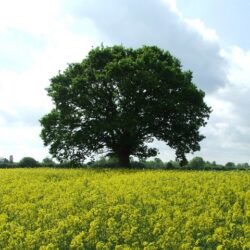📖 סדר הגדה של פסח עברי-כּורדי | Seder Haggadah shel Pesaḥ (Ivri-Kurdi), a Passover seder haggadah for Kurdish Jews in Hebrew and Aramaic (1959)
Source Link: https://opensiddur.org/?p=26259
open_content_license: Creative Commons Zero (CC 0) Universal license a Public Domain dedication date_src_start: 1959-00-00 date_src_end: 1959-00-00 languages_meta: [{"name":"Aramaic, Lishana Deni (Zakho Jewish Neo-Aramaic)","code":"lsd","standard":"ISO 639-3"}] scripts_meta: [{"name":"Hebrew (Ktav Ashuri)","code":"Hebr","standard":"ISO 15924"}] Date: 2019-07-30
Last Updated: 2025-08-12
Categories: Haggadot for the Seder Leil Pesaḥ
Tags: 20th century C.E., 58th century A.M., Aramaic translation, Israel, Kurdish Jewry
Excerpt: A Passover Seder Haggadah in Hebrew and Aramaic (or Kurdish, as stated on the title page) published in Israel for the wave of Kurdish-Jewish immigrants from Iraq and other eastern countries. . . .
Content: A Passover Seder Haggadah in Hebrew and Lishana Deni, a Jewish-Kurdish Zakho dialect of Neo-Aramaic published in Israel for the wave of Kurdish-Jewish immigrants from Iraq and other eastern countries.
Contributor: Aharon N. Varady (digital imaging and document preparation)
Co-authors:
-

Name: Aharon N. Varady (digital imaging and document preparation)
Bio: Aharon Varady, founding director of the Open Siddur Project, is a copyright researcher and amateur book scanner. He prepares digital images and new digital editions of prayer books and related works in the Public Domain in order to make their constituent parts (prayers, translations, annotations, etc.) publicly accessible for collaborative transcription by project volunteers. (In some cases, he finds existing digital editions prepared by others that require correction and reformatting.) If you appreciate his efforts, please send him a kind note or contribute to his patreon account.
Website:
Profile Link: https://opensiddur.org/profile/aharon-varady-digital-imaging
-

Name: Unknown (translation)
Bio: Sometimes the best we can do in attributing a historical work is to indicate the period and place it was written, the first prayer book it may have been printed in, or the archival collection in which the manuscript was found. We invite the public to help to attribute all works to their original composers. If you know something not mentioned in the commentary offered, please let us know!
Website:
Profile Link: https://opensiddur.org/profile/unknown-translator
-

Name: Unknown
Bio: Sometimes the best we can do in attributing a historical work is to indicate the period and place it was written, the first prayer book it may have been printed in, or the archival collection in which the manuscript was found. We invite the public to help to attribute all works to their original composers. If you know something not mentioned in the commentary offered, please leave a comment or contact us.
Website:
Profile Link: https://opensiddur.org/profile/unknown
Featured Image:

Title: title page for seder haggadah shel pesah ivri-kurdi
Caption: title page for seder haggadah shel pesah ivri-kurdi (1959)





